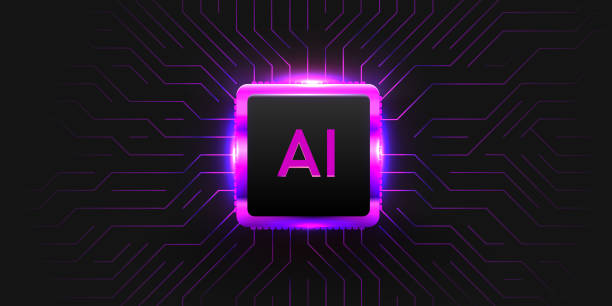Why Does Everyone Need a Personal Website?
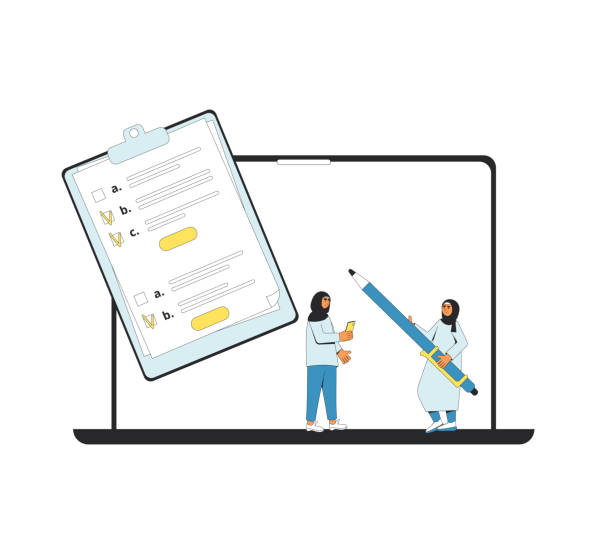
In today’s world, where competition in every field has reached its peak, having a personal website is no longer a luxury choice, but an undeniable necessity.
Imagine your personal website as the digital storefront for your skills, experiences, and achievements; a place where you can tell your professional story and showcase your personal brand in the best possible way.
This platform not only helps you build a strong personal brand but also serves as a central hub for all your online activities.
From publishing specialized articles and showcasing portfolios to attracting new clients and connecting with industry colleagues, a website can be your bridge to the outside world.
Have you ever thought about how you can fully showcase your creativity without the limitations of other platforms? #PersonalWebsite gives you this freedom.
This powerful tool not only enhances your credibility in your field but also brings you new career opportunities.
As a freelancer, entrepreneur, artist, or even a student, having a professional and controlled online presence is of paramount importance.
Personal website design allows you to convey your message directly and in your desired tone to your audience, and this will be your distinguishing factor from your competitors.
This explanatory approach shows you why investing time and energy into this topic is a smart and strategic decision for your professional future.
Losing potential customers due to an unprofessional website? Rasavob is your answer! With our specialized corporate website design services:
✅ Enhance your business’s credibility and standing
✅ Experience more targeted customer acquisition
⚡ Act now to receive a free consultation!
Content Planning and Strategy for Your Website
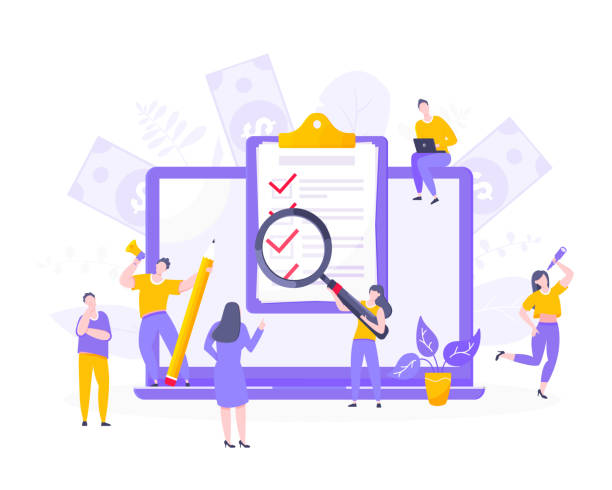
Before taking any steps for personal website design, thorough planning and the formulation of a coherent content strategy are of paramount importance.
This instructional phase involves answering key questions such as “What is your main goal for creating this website?” or “What message do you want to convey to your audience?”.
Are you looking to attract new clients, or do you want to share your knowledge and expertise? Defining your target audience is also crucial at this stage.
Precisely understanding who will visit your website helps you create content tailored to their needs and interests.
For example, if your audience consists of students, your tone and content should be educational and guiding.
However, if your audience comprises large companies, you should provide specialized and proven content.
After defining your goal and audience, it’s time to choose the type of content.
Will your website primarily feature articles and blog posts? Or will a gallery of portfolios and projects constitute the bulk of it? The right blend of text, image, and video content can enhance the user experience.
Additionally, keyword research related to your field of work should also be performed at this stage.
These keywords help you produce content that is more easily found by search engines, directing more targeted traffic to your website.
This section integrates thought-provoking content with goals and strategy to make you ponder: How can your content not only attract an audience but also convert them into loyal customers or followers? This is what transforms your personal website from a simple page into a powerful tool.
Choosing the Right Platform for Building a Personal Website
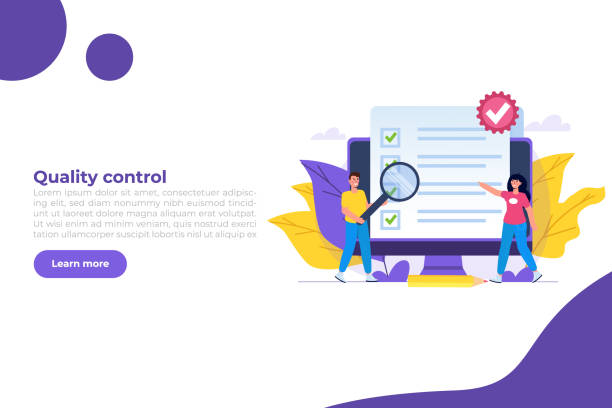
Choosing the right platform for building a personal website is one of the most vital decisions you’ll make, as this choice directly impacts your website’s speed, cost, flexibility, and future capabilities.
Various platforms for website design exist, each with its own advantages and disadvantages, and this section specifically guides you in this regard.
Among the most popular and flexible options is WordPress, which is suitable for any type of website due to its large user community, countless plugins, and diverse themes.
WordPress allows you complete control over your website’s design and functionality but requires basic knowledge of hosting and domain names.
Alongside WordPress, website builder platforms like Wix, Squarespace, and Zyro also exist, which, with their drag-and-drop user interfaces, make the design process very easy for beginners.
These platforms typically include hosting and support but offer less flexibility for deep customization.
For developers or individuals seeking complete control and infinite customization, coding from scratch (Custom Code) using languages like HTML, CSS, and JavaScript is a powerful option, although it is more time-consuming and requires high technical knowledge.
Your choice should be based on your technical skills, budget, and the level of control you wish to have over your website.
Here is a comparison table for three common options:
| Feature | WordPress | Website Builders (e.g., Wix) | Custom Code |
|---|---|---|---|
| Ease of Use | Moderate (requires initial learning) | Very Easy (drag-and-drop) | Difficult (requires programming knowledge) |
| Flexibility and Customization | High (via plugins and code) | Moderate (limited to platform tools) | Very High (full control) |
| Cost | Moderate (hosting, domain, premium plugins) | Moderate to High (monthly subscription) | Variable (developer, hosting, domain) |
| Support | Large community, extensive documentation | Direct platform support | Requires self-knowledge or hiring an expert |
Each of these options has its unique advantages, and the final choice should be made based on your specific needs for your personal website.
Principles of Visual Design and User Experience in Personal Websites
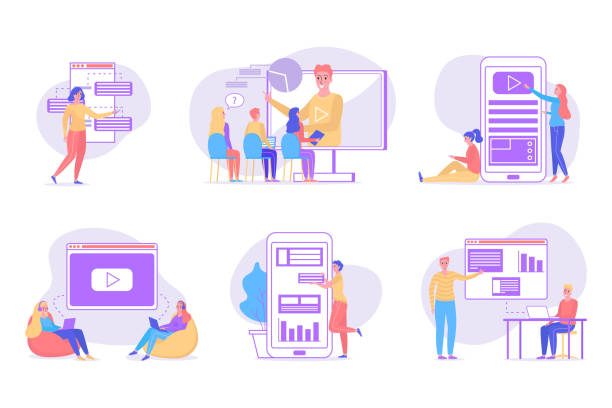
Personal website design is not limited to coding or platform selection; rather, visual aspects and user experience (UX) play a crucial role in its success.
This instructional section delves into specialized design principles.
User Interface (UI) and User Experience (UX) are two inseparable concepts in web design.
UI refers to the look and feel of your website – how graphic elements (such as colors, fonts, buttons, and images) are arranged together to create an attractive and cohesive visual design.
Choosing an appropriate color palette that aligns with your personal brand, using legible and consistent fonts, and designing attractive and user-friendly visual layouts are among these principles.
On the other hand, UX focuses on the ease of use and user satisfaction when interacting with your website.
Can users easily find the information they need? Is your website’s navigation logical and simple? Page loading speed, responsiveness (for correct display on various devices), and clear Calls to Action are all important factors in improving user experience.
A personal website with beautiful visual design but poor user experience cannot achieve its goals.
Users quickly leave websites where information is hard to find or that take too long to load.
The ultimate goal is for every visitor to have a positive and memorable experience that encourages them to stay longer on the website and interact with your content.
This is where investing in a well-thought-out personal website design yields real results.
Are you tired of your e-commerce site having visitors but no sales? Rasavob solves your core problem with professional e-commerce website design!
✅ Significant increase in sales with targeted design
✅ Flawless user experience for your customers
⚡ Get a free consultation!
Essential Pages and Key Features of a Personal Website
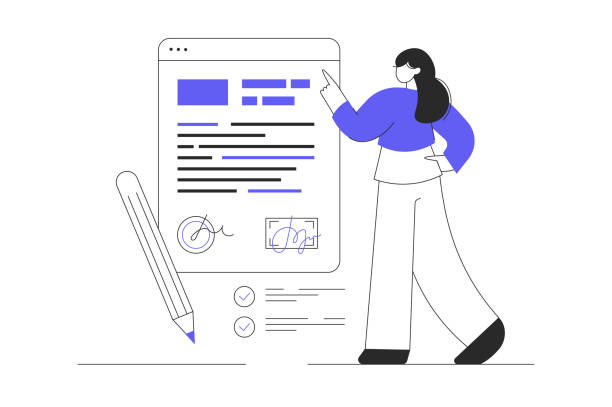
After choosing a platform and understanding design principles, the next step in personal website design is deciding on essential content and pages.
Every personal website should include at least a few key pages that allow visitors to get to know you and connect with you.
This explanatory and guiding section helps you ensure you’ve included all necessary elements on your website.
The first and most important page is the “About Me” page.
This page is your golden opportunity to introduce yourself, tell your professional story, and highlight your skills and experiences.
In this section, honesty and authenticity are paramount.
The “Portfolio” or “Projects” page is also vital for many fields (such as design, programming, writing, photography).
This page is where you can showcase your best work and visually demonstrate the effectiveness of your work.
Be sure to include details of each project: the project’s goal, your role, challenges, and results.
A “Blog” or “Articles” section can also be very powerful.
This allows you to share your knowledge and expertise, create added value for your audience, and be recognized as an authority in your field.
It also improves search engine optimization (SEO) through regular content publication.
Finally, a “Contact Me” page is absolutely essential.
This page should include various contact methods (email, social media links, contact form) so visitors can easily get in touch with you.
Ensure that the contact form works correctly and that you respond promptly.
These key features help you have a complete and functional personal website.
Search Engine Optimization (SEO) for Increased Visitors

Personal website design without considering Search Engine Optimization (SEO) is like having a beautiful shop on a dead-end street.
This specialized and educational section provides the necessary guidance to increase your website’s visibility in search results.
SEO is a set of techniques that helps your website rank higher for keywords relevant to your field in search engines like Google.
One of the first steps is keyword research.
Identifying the phrases and words your audience is searching for helps you create content that truly addresses their needs.
Then, naturally incorporate these keywords into page titles, headings (H1, H2, H3), main text, and even image descriptions (alt text).
High-quality and unique content is the backbone of any successful SEO strategy.
Search engines prioritize content that is valuable to users.
In addition to on-page content, off-page factors like backlinks (links from other websites to yours) play a vital role in SEO.
Acquiring backlinks from reputable websites increases your credibility in the eyes of search engines.
Website loading speed and its mobile responsiveness are also crucial Google ranking factors.
By using tools such as Google Analytics and Google Search Console, you can monitor your website’s performance, identify keywords users are using to reach your site, and continuously refine your SEO strategy.
Remember that SEO is an ongoing process and requires patience and effort for your personal website to reach its peak.
Maintenance, Security, and Updates for Your Personal Website
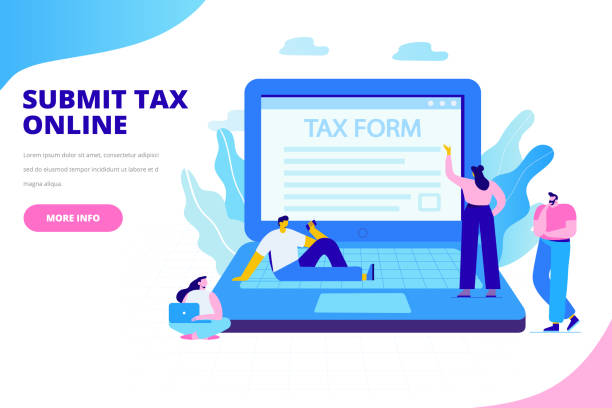
After designing and launching your personal website, your work isn’t over.
Regular maintenance, ensuring security, and continuous updates are vital steps to ensure your website’s proper functioning and data protection.
This section provides important guidance that also covers news and analytical aspects to make you aware of the importance of this topic.
Neglecting these aspects can lead to serious problems such as cyber attacks, data loss, or a decrease in search engine rankings.
One of the most important measures is regular backup of all your website’s content and its database.
This allows you to quickly restore your website in case of any technical issues or cyber attacks.
Regular updates of the platform (like WordPress), themes, and plugins are also very important, as these updates often include security patches and performance enhancements.
Installing an SSL certificate (which changes your website’s address from HTTP to HTTPS) is also essential for user data security and increasing their trust.
Google also prefers websites with SSL in its rankings.
Monitoring website performance for loading speed and potential errors, and rectifying them quickly, improves user experience.
News related to cyber attacks is increasing daily, so you must be vigilant.
Here is a checklist for your website maintenance:
| Item | Description | Recommended Frequency |
|---|---|---|
| Full Backup | Backup of files and database | Weekly or Monthly (depending on update frequency) |
| Platform, Theme, and Plugin Updates | Apply latest versions for security and performance | Immediately after release |
| Check for Broken Links | Fix internal and external broken links | Monthly |
| Security Check | Scan for malware and vulnerabilities | Monthly or Quarterly |
| Database Optimization | Clean and optimize database | Quarterly |
Paying attention to these points helps ensure your personal website always maintains optimal and secure performance.
How to Turn Your Personal Website into a Tool for Success?

After designing your personal website and ensuring its proper functioning, the main question is: How can we turn it into an effective tool for achieving professional goals or even generating income? This analytical and engaging section helps you understand your website’s full potential and leverage it to your advantage.
One of the main ways to optimally use your website is to produce valuable and consistent content.
Your content should not only provide useful information but also engage visitors.
Can you use content marketing to lead readers towards deeper questions or present challenges that make them think? This is where engaging and analytical content comes into play.
Integrating your website with social media is also crucial.
Your website can serve as the central hub for all your online activities.
Share your new content on social media, and use social sharing buttons on your website so your content can easily go viral.
Interacting with your audience through comment sections, contact forms, and even hosting online webinars or workshops increases their loyalty.
For freelancers and consultants, a personal website is the best tool for client acquisition.
Highlight your services page, portfolio, and testimonials.
You can collect visitors’ emails by offering free content (such as small e-books, checklists) and build an email list that will later help you with direct marketing.
For artists and content creators, selling digital products (such as photos, music, designs) or physical ones can also be a way to generate income.
The goal is for your personal website to go beyond an online resume and transform into a dynamic and result-oriented tool. This deeper analysis shows how a website can become a productive instrument for your professional success.
Are you concerned about your e-commerce site’s low conversion rate and not achieving your desired sales?
Rasavob is your specialized solution for having a successful e-commerce website.
✅ Significant increase in conversion rate and sales
✅ Professional and user-friendly design to attract customer satisfaction
⚡ Get a free consultation!
Common Mistakes in Personal Website Design and Management, and Their Solutions

Even with the best intentions and meticulous planning, mistakes in personal website design are not unavoidable.
Recognizing these common mistakes and knowing their solutions can save you time and resources.
This analytical and thought-provoking content helps you avoid repeating these errors.
One of the most common mistakes is slow loading speed.
Today’s users are impatient; if your website doesn’t load within a few seconds, they will likely leave it.
Solutions include optimizing images (compressing without loss of quality), using robust hosting, and employing caching plugins.
Another mistake is non-responsive design.
In an era where many users browse the web on their mobile phones, your website must display correctly on all devices (mobile, tablet, desktop).
The solution is to use responsive templates or frameworks and continuously test the website’s display on various devices.
Irregular or low-quality content is also a major error.
A personal website that is not updated or contains outdated and worthless content cannot retain an audience.
The solution is to create a content calendar and regularly publish valuable and up-to-date material.
Have you ever considered how your content can be unique and engaging? The lack of clear Calls to Action is also a common mistake.
Users need to know what to do after visiting a page: Should they fill out a form, contact you, or download a portfolio? Calls to Action should be clear, visible, and persuasive.
Finally, ignoring SEO is also a fatal mistake that prevents your website from being seen in search results.
By implementing the SEO principles explained earlier, you can remedy this issue.
By avoiding these common mistakes, you can ensure that your personal website functions correctly and fulfills your objectives.
The Future of Personal Websites and New Trends

The digital world is rapidly evolving, and personal website design is no exception.
Understanding new trends helps you prepare your website for the future and always stay ahead of the competition.
This news and analytical section delves into important predictions and developments that will shape the future of personal websites.
One of the most important trends is the increasing significance of Artificial Intelligence (AI) and machine learning in personalizing user experience.
Future websites will be able to provide personalized content based on visitor behavior, offer more relevant suggestions, and even have more intelligent interactions through chatbots.
This significantly improves the user experience and makes visitors feel that the content is tailored specifically for them.
Another trend is the emergence of Web3 and blockchain technology.
These technologies can bring greater security and transparency to personal websites and even enable the creation of digital ownership for content (such as NFTs).
This can be particularly exciting for artists and content creators.
Voice and visual search are also growing, and websites must be optimized to respond to these types of searches.
This means your content should be structured in a way that is suitable for conversational searches.
Furthermore, the importance of accessibility for people with disabilities and website sustainability (optimization to reduce energy consumption) is also increasing.
Personal websites in the future will increasingly become a space for expressing a more complete and multifaceted digital identity that goes beyond a simple resume.
Preparing for these trends will help your personal website remain up-to-date and competitive.
Frequently Asked Questions
| Question | Answer |
|---|---|
| 1. Why should we have a personal website? | To showcase skills, resume, portfolio, and build a professional personal brand. |
| 2. What is the first step in designing a personal website? | Defining the website’s main goal (e.g., showcasing portfolio, online resume, personal blog) and target audience. |
| 3. How important is choosing a suitable domain name? | Very important; the domain name should be relevant to your identity, memorable, and easy to type (e.g., your first and last name). |
| 4. What type of content should be included on a personal website? | Typically includes “About Me,” “Resume,” “Portfolio,” “Contact Methods,” and optionally a “Blog” section. |
| 5. What is Responsive Design and why is it important? | It means the correct and optimized display of the website on all devices (mobile, tablet, laptop) and is crucial for user experience and SEO. |
| 6. Which platforms are recommended for building a personal website? | WordPress for more flexibility and control, or using website builders like Wix or Squarespace for simplicity. |
| 7. How can SEO for a personal website be improved? | Using relevant keywords, meta descriptions, quality and up-to-date content, image optimization, and loading speed. |
| 8. What are the main challenges in maintaining a personal website? | Regular updates of content and plugins, regular data backups, and monitoring website security. |
| 9. Is programming knowledge required for personal website design? | No, using Content Management Systems (CMS) like WordPress or website builder tools, a personal website can be created without coding. |
| 10. How to promote and introduce your personal website? | Sharing links on social media, adding links to email signatures, business cards, resumes, and professional networking. |
And other services of Rasavob Advertising Agency in the field of advertising
- Smart Direct Marketing: An innovative service for increasing online growth through marketing automation.
- Smart Data Analysis: Transform online growth with the help of intelligent data analysis.
- Smart Website Development: A professional solution for online growth focusing on SEO-driven content strategy.
- Smart UI/UX: Professional optimization for increased sales using marketing automation.
- Smart Marketplace: An innovative platform for improving click-through rates with marketing automation.
And over a hundred other services in the fields of internet advertising, advertising consulting, and organizational solutions
Internet Advertising | Advertising Strategy | Advertorials
Sources
Comprehensive Guide to Personal Website DesignKey Tips for Designing a Successful Personal WebsiteStep-by-Step Guide to Building a Personal WebsiteThe Importance of Personal Websites in Branding
❓ Are you ready for your business to soar in the digital world? Rasavob Afarin Digital Marketing Agency offers innovative and targeted solutions, including WordPress website design, SEO, and comprehensive marketing strategies, to help you achieve your goals.
📍 Tehran, Mirdamad Street, next to Bank Markazi, Southern Kazeroon Alley, Ramin Alley, No. 6



